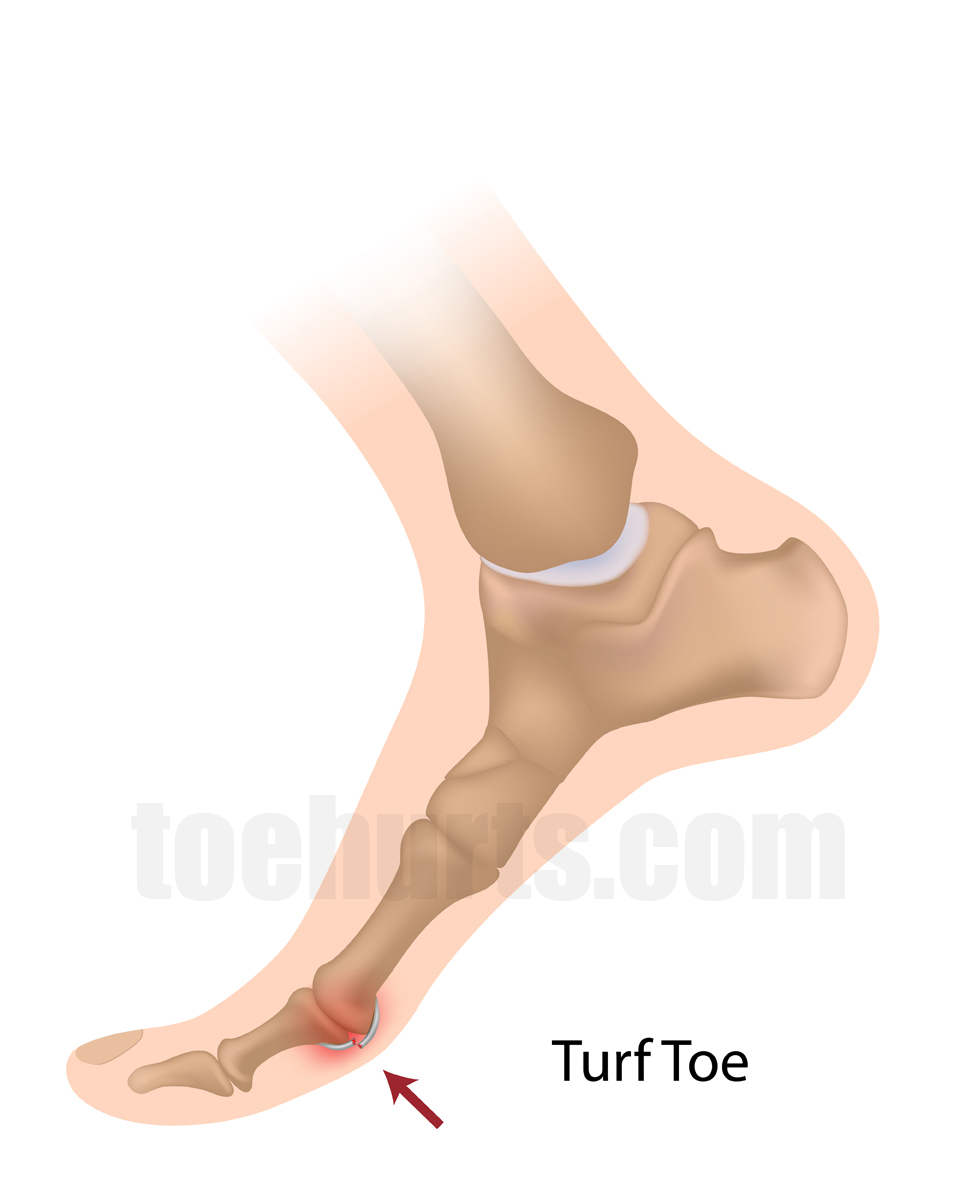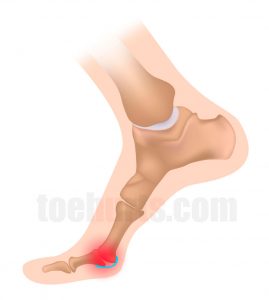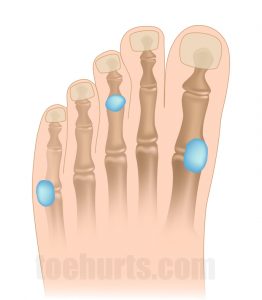Turf toe gets its name from the fact that the injury is often sustained by people that spend a lot of time on artificial turf, but it can occur on virtually any type of surface. On artificial turf it’s common to wear types of footwear that possess studs, spikes, or blades that stick into the ground. When moving, it’s possible that an individual’s full body weight may continue to go forwards while their foot is stuck in the ground and their big toe is in a fully extended position, which results in what’s known as a “hyperextension” of the first metatarsophalangeal joint (MPJ), causing a sprain of the joint capsule. When this happens, it will usually be possible to see considerable bruising around the base of the big toe and the ligaments connected to the toe will be stretched, and sometimes may even tear. It’s also possible that the big toe may be dislocated due to the extreme amount of pressure placed on the toe. If you are unfortunate enough to suffer from turf toe, you will almost certainly experience considerable pain right after the injury is sustained, and over time the range of motion of the joint may be reduced. Turf toe also increases the likelihood of the development of arthritis.
Turf Toe Causes
Turf toe is not a condition that develops over time; it occurs suddenly as a result of the events we discussed above. As already mentioned, turf toe is an injury that is especially common amongst athletes that compete on artificial grass, which isn’t as soft as regular glass, and consequently, it’s far more likely that studs or spikes will “get stuck.” It can also occur on “real” grass if the footwear worn doesn’t properly support your feet or if footwear is overly flexible and allows the foot to bend into abnormal positions.
Main Symptoms of Turf Toe
There are several different “grades” of turf toe that relate to the severity of the injury. Signs to watch out for include:
- Grade 1 Turf Toe. The area around the joint capsule will be sensitive to touch although there is unlikely to be any significant swelling. This is the most common grade of turf toe that is sustained.
- Grade 2 Turf Toe. More severe, it’s likely that you will experience mild inflammation of the tissue around the joint capsule and that it will be painful when you put pressure on the toe. Visible bruising is probable, range of motion will be limited and it’s possible that ligaments may have been torn.
- Grade 3 Turf Toe. The most severe type of turf toe, the toe will be extremely swollen and sore to touch. It’s also likely that there will be considerable bruising, severely limited range of motion, torn ligaments, and perhaps even compression damage to the toe’s articular cartilage.
Turf Toe Treatment
It’s important to treat the injury immediately after it has been sustained. Ice should be applied in order to help reduce swelling, relieve pain and ultimately speed up the healing process. Afterward, it’s recommended that you apply a compression bandage around the affected area which will prevent you from further straining the toe and provide critical support. This bandage mustn’t be wrapped too tightly though, otherwise, circulation to your foot may be restricted or cut-off altogether, which can result in additional complications. It typically takes up to 3 weeks to see a significant improvement if the turf toe is sustained, and it may be necessary to attend sessions with a licensed physiotherapist once the pain has subsided in order to improve flexibility in the joint and regain lost strength.


